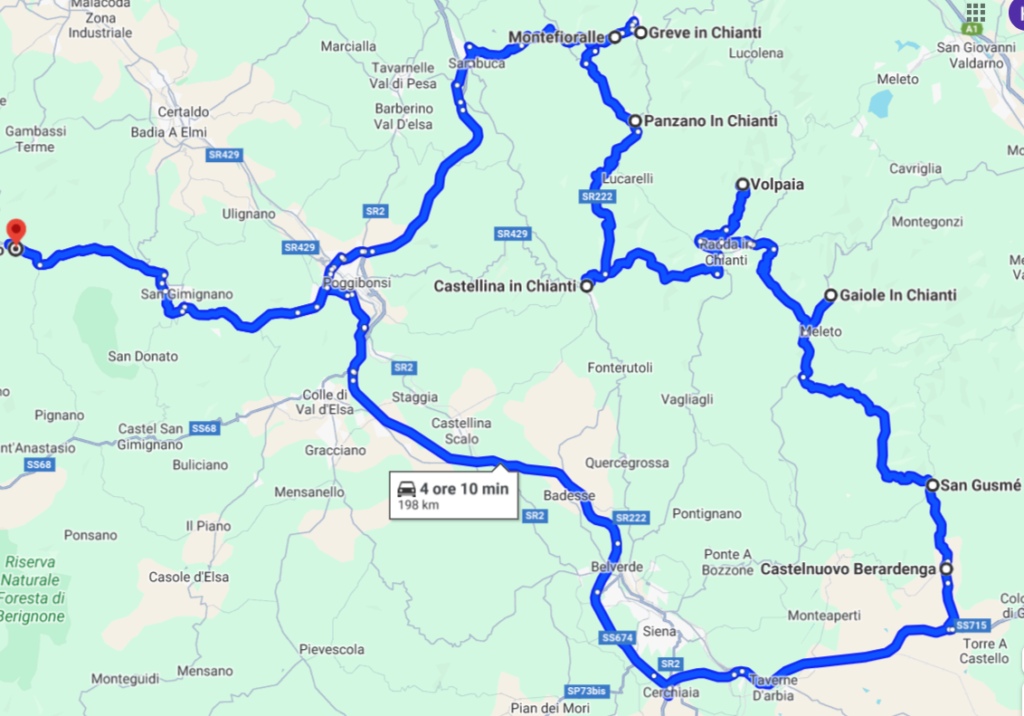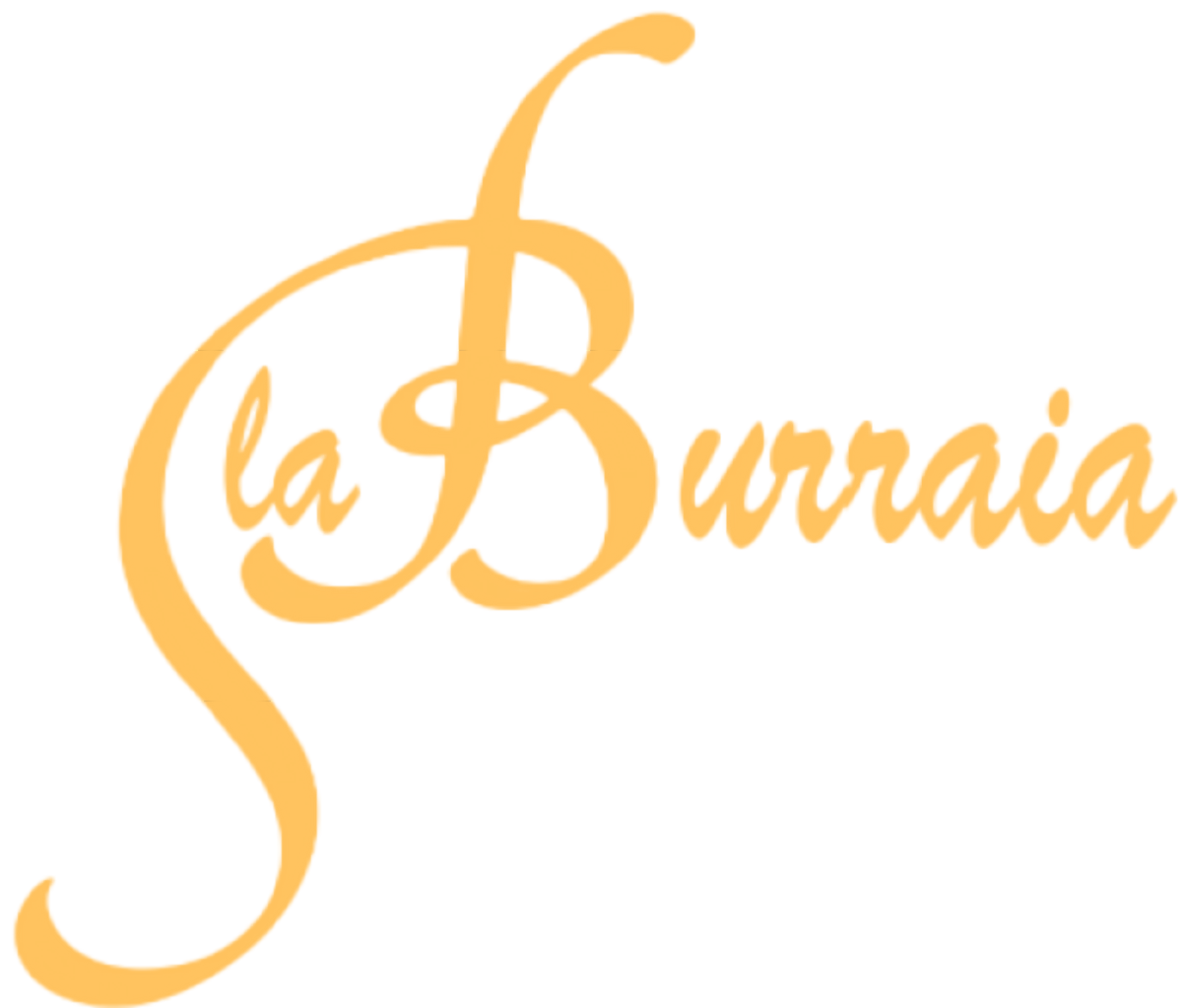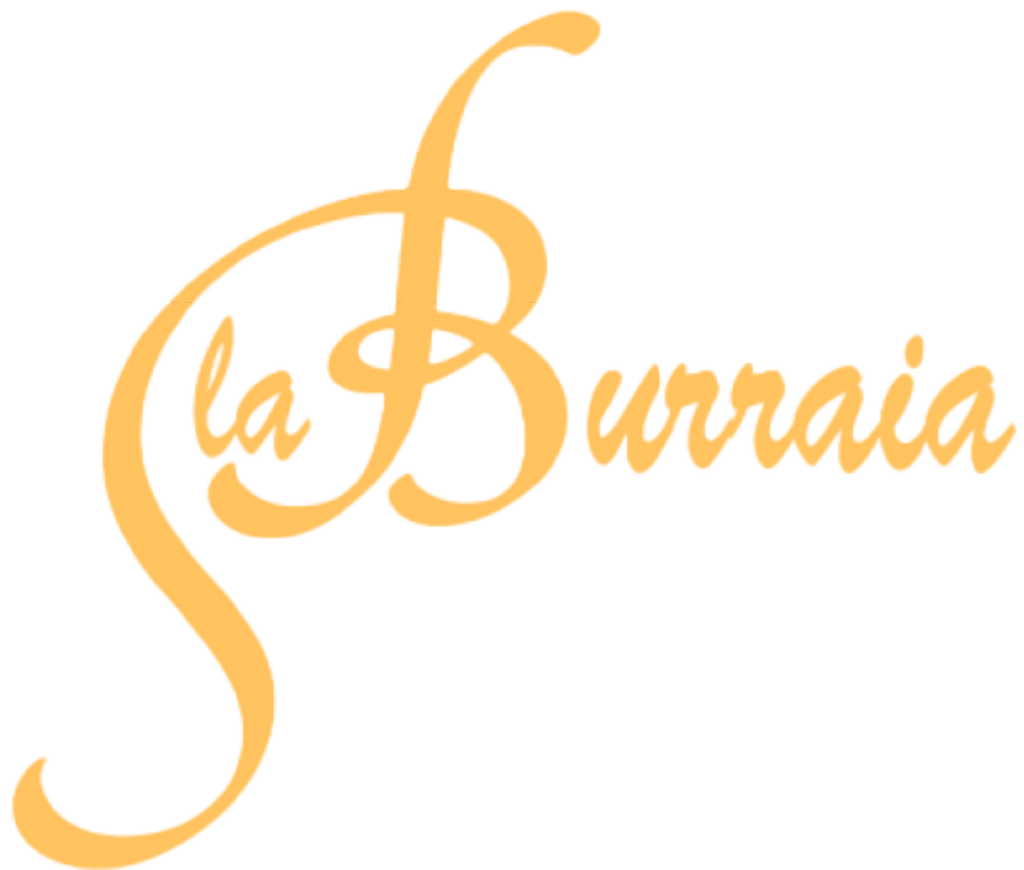The Chianti villages are:
- Castelnuovo Berardenga
- San Gusmè
- Gaiole in Chianti
- Castellina in Chianti
- Panzano in Chianti
- Montefioralle
- Greve in Chianti

Castelnuovo Berardenga was built in 1366 as a ‘new castle’ by the city of Siena for its strategic position on the border with the Sienese land. It was under the control of Siena until 1555, when Siena was defeated by the Grand Duchy of Medici. Of the original defence system, the tall tower in Piazza Petrilli still remains, transformed into the city’s clock tower in 1755. Designated as City Slow, the city offers a relaxed and peaceful atmosphere emphasising an authentic and genuine Tuscan lifestyle. In the historical centre is the imposing Vicolo dell’Arco, characterised by steep stone stairs that feature an arch decorated with a beautiful bas-relief. Nearby is the Church of Saints Giusto and Clemente, built during the 19th century and displaying a Madonna and Child by a Renaissance Sienese artist.


Not far from here is the Church of the Madonna del Patrocinio, which displays a venerated painted and glazed terracotta Madonna from the 14th century, found in the castle ruins where Vicolo dell’Arco is today. Another nearby attraction is Villa Chigi Saracini, built in the 19th century and surrounded by a splendid Italian Renaissance garden and an English-style landscaped park. Castelnuovo Berardenga is home to a unique museum, the Museo del Paesaggio, housed in a late 19th-century building that was once used as a public slaughterhouse. The museum itinerary aims to make people reflect on the transformations of the world, on the changing term ‘landscape’ and, in general, on the relationship between man and the environment.


San Gusmè: The picturesque town is located less than 5 km from the centre of Castelnuovo. A true jewel, seemingly untouched by time, perched on a hill offering fantastic panoramic views. San Gusmè, since its foundation, always remained under the influence of Siena and then of the Grand Duchy of Tuscany, probably also thanks to its strategic position that, from the top of its hill, dominates the entire valley. Even today, from the strategic points of the town, it is possible to admire incredible views in which one can recognise Siena, the Mangia Tower and the Duomo. Although modest in size, the village is a little gem to explore with its characteristic narrow streets and buildings that retain the signs of history. There are no museums, cinemas or pubs: there are only a few shops, two restaurants and a post office in the village, the services needed for survival. It is precisely the absence of large shops and populous squares that makes the village even more magical; to look at it, San Gusmè seems like a village from another era in which time and space are suspended in favour of that great and modest beauty.


Gaiole in Chianti is another important centre in the Chianti Classico region, where some of the most popular sights are undoubtedly the wine cellars, places for sublime tastings of typical products, oil and wine. But that is not all: in addition to its Chianti Classico wine, Gaiole is immersed in a beautiful landscape, characterised by ancient castles and Romanesque parish churches. Situated to the east of Radda, Gaiole offers a preview of the battles for local power that dominated these lands for over a hundred years: from the Medici family to the Ricasoli family, from the Guelphs to the Ghibellines, and the constant wars for territorial supremacy between Florence and Siena. It was precisely these continuous conflicts that stimulated the construction of the fortified villages and castles with numerous watchtowers that we can all visit in the area today. But out of all this chaos, the wine-making tradition of Gaiole was born, leading to the production of the famous Chianti Classico. In fact, Gaiole boasts the largest winery in the Chianti Classico area: Castello di Brolio, the same castle where Baron Bettino Ricasoli invented the Chianti formula in 1872. Excellent wines that vary according to the composition of the soil, the intensity of the sun and the rain. We recommend a tour of the Chianti wine cellars, a sensorial and tasting journey through the wine varieties of this splendid region, to discover exquisite wines that tell the story of this land through their aromas, flavours and fragrances. Wines that strictly follow the precepts of Chianti Classico and the regulations of the San Giovese grape varieties.
The evocative Castello di Brolio has dominated the surrounding valleys in the southern part of Chianti Classico for more than 10 centuries. Situated on a high and solitary hill a few kilometres from the centre of Gaiole in Chianti, the castle has Longobard origins and has belonged to the important Tuscan Ricasoli family since 1141. Brolio Castle – actually only the gardens because the family still lives there – can be visited for a fee. The basic tour includes a free, unguided visit to the gardens surrounding the castle. A guided tour of the museum can also be added at will. The classic tour includes a visit to the wine cellars and wine tasting, while the vineyard tour includes a visit to the experimental vineyards, the wine cellar and wine tasting; both are done by appointment only. the ticket for all tours includes a wine tasting at the castle wine shop.


Discovering the Etruscan town of Castellina in Chianti. The spectacular road alone that one travels to reach this heavenly corner almost hidden among the winding Chianti hills is reason enough to stop and visit its narrow stone streets and characteristic historical centre. However, as if this were not enough, Castellina boasts a past rich in history and interesting events dating back to the Bronze Age, not to mention its active involvement in oil and wine production.
Being located between the influential and powerful Renaissance city par excellence – Florence – and Siena, Castellina presents itself as the ideal place for those visiting Tuscany for the first time and wishing to explore the Chianti area and its wonders, such as the towns of Greve in Chianti or Castelnuovo Berardenga, charming villages that deserve to be included in your itinerary. And, as if the awe of the local architecture that preserves the charm of times gone by were not enough, the enchantment of nature and the panorama that opens up before those who drive along the roads through the Pesa, Arbia and Elsa valleys complete a fairytale picture.


Historically, Panzano in Chianti has been mistreated over and over again throughout history. Situated practically in the middle of the territories under the influence of the two rivals in constant conflict – Siena and Florence – it was destroyed in 1260 and again in 1397, during the 15th and 16th centuries, when it continually changed under the control first of Florence, then of Siena, and so on. What remains of the original medieval centre is now incorporated in the bell tower of the church of Panzano Alto. The church of Santa Maria was rebuilt in the 19th century on top of the old mediaeval building and boasts a striking stone staircase (perfect as a backdrop for beautiful photos) and includes within its structure what was once the tower of the castle that was destroyed several times.


Montefioralle, not far from the centre of Greve in Chianti, is a fortified village that has joined the prestigious network of the association I Borghi più belli d’Italia. From the cobbled streets rise picturesque stone houses that give the village an atmosphere suspended between the Middle Ages and wonder, surrounded by the most classic and evocative Tuscan panoramas.


The history of Greve in Chianti is strongly connected with the beautiful castle of Montefioralle, located above the town: at one time (in the 13th century), it served as the central square of the castle. Its strategic position – at the crossroads of three important roads used by pilgrims, the Chiantigiana, the road to Valdarno and the road to Val di Pesa – favoured its economic development. By the beginning of the 16th century, the curiously shaped square had already been built: it was later described by Grand Duke Leopold as ‘a beautiful square, where a large market of livestock and foodstuffs is held every Saturday’. That market is still held every Saturday – with the exception of livestock, there are still plenty of stalls where you can find fresh fruit and vegetables, cheese, olives, household goods, flowers and clothing.




